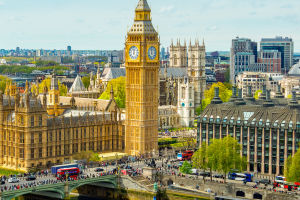Traveling is an exciting adventure, but it's easy to fall into the trap of overbooking your itinerary.
With the excitement of discovering new destinations, the temptation is strong to pack every moment with activities. However, overdoing it can lead to exhaustion and even detract from the experience.
How do you balance rest and exploration effectively while traveling? Here's how to create a travel schedule that allows for both enjoyment and relaxation.
1. Prioritize Rest with Intentional Planning
One of the best ways to avoid travel burnout is to consciously schedule downtime. While it's tempting to fill every day with packed activities, be mindful of your physical limits and the importance of rest.
Start with realistic expectations. Plan for a full day of activities every other day. For example, on a city tour day, try to take it easy the following day—perhaps with a light stroll through the park or a visit to a museum. This approach ensures you can explore new places without draining your energy.
Rest breaks are just as important as sightseeing. During the day, make time to sit and relax. Whether it's a coffee break in a local café or a nap in your hotel room, these pauses help keep your energy levels high. A simple 30-minute rest can recharge you enough to continue your day with enthusiasm.
2. Tailor Your Activities to Your Energy Levels
Not all activities are equal when it comes to physical exertion. Be mindful of how taxing each one might be on your body and plan accordingly.
• Light Activities: Opt for walking tours or visits to nearby parks, where you can soak in the local atmosphere without wearing yourself out. These activities can often be just as enriching as more intense ones.
• Moderate Activities: Explore popular landmarks or museums that require some walking but are still manageable in terms of energy.
• High-Intensity Activities: Save more physically demanding activities like hiking, zip-lining, or long-distance bike rides for days when you're feeling rested and energetic. Try not to schedule these activities back-to-back to avoid strain.
3. Listen to Your Body—The Importance of Hydration and Nutrition
Physical well-being is at the heart of a good travel experience. No matter how carefully you plan, poor hydration and nutrition can quickly derail your efforts to balance activity with rest.
• Stay Hydrated: Dehydration is a common cause of fatigue, especially when you're in a new environment. Always carry a water bottle and drink regularly. This is particularly crucial if you're traveling to warmer climates or engaging in outdoor activities.
• Healthy Eating: Eating balanced meals throughout the day helps maintain energy levels. Opt for fresh fruits, vegetables, and protein-packed snacks to sustain you between meals. Avoid heavy meals that can make you feel sluggish during your sightseeing.
4. Strategic Use of Transportation
Another key factor in maintaining a healthy balance of activity and rest is how you move around a city or region. Walking everywhere might be tempting, especially if you want to see everything. But it's important to mix in some more comfortable options for longer distances.
• Public Transport: Take advantage of buses, trams, or metro systems, especially in large cities. These can save you time and energy, leaving you with more stamina to explore the places that truly interest you.
• Taxis or Ride-Sharing: If you're feeling tired or if public transport is too far from your location, using a taxi or a ride-sharing service can be a great way to get around without overexerting yourself.
• Bike Rentals: In some cities, cycling is a perfect balance—less effort than walking, but still an active way to explore.
5. Plan for Recovery Days
If you're on a long trip, consider integrating full recovery days into your itinerary. These are days where you don't have any planned activities, allowing your body to recharge fully.
• Recovery Day Ideas: Stay in a wellness hotel with spa services, go for a leisurely swim, or take a scenic cruise or train ride to a nearby town. This can help refresh you for the next round of sightseeing.
• Sleep: Adequate sleep is one of the most overlooked recovery tools. Aim for 7-9 hours of sleep each night, especially if you've had a physically demanding day. Consider taking a nap if you're feeling particularly drained.
6. Early Mornings, Early Nights
Start your days early, especially when visiting crowded tourist spots. Early mornings tend to be quieter, cooler, and less chaotic, making them ideal for sightseeing. Plus, you'll have more energy to appreciate the sights before crowds arrive.
Try to plan activities for the first half of the day and keep afternoons for rest. You might want to take a break during the afternoon heat (especially in tropical climates), or simply nap to recharge for the evening. By evening, you'll have plenty of energy to enjoy a leisurely dinner or a night out.
7. Embrace the "Slow Travel" Concept
Instead of cramming in too many destinations in a short amount of time, try embracing the "slow travel" concept. Spend more time in one place, get to know the locals, explore neighborhoods at your own pace, and don't rush to the next attraction. This not only reduces the physical strain of constant travel but allows for deeper, more enriching experiences.
In some destinations slow travel is encouraged. Rather than hopping from one city to the next, you immerse yourself in one place, enjoy the local culture, and experience the area in a more relaxed manner.
Conclusion: Travel Well, Travel Smart
The key to enjoying your travels without getting exhausted lies in balance. When planning your itinerary, keep in mind that rest and activity should coexist. By pacing yourself, listening to your body, and prioritizing both physical wellness and exploration, you'll ensure that your travels are enjoyable, enriching, and sustainable.
Remember, the best memories often come from moments of relaxation, where you're truly able to absorb the culture around you—not from trying to see it all in one go.


